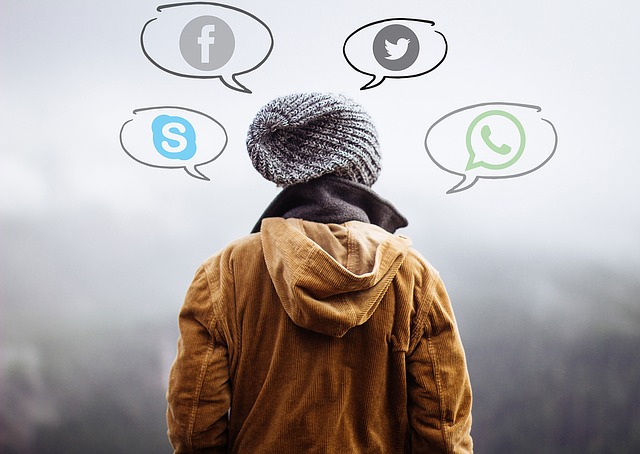Trade shows are social events, that is, they thrive on human interaction. And because social media lets us connect with a larger number and broader base of people than a given physical setting is likely to, many businesses have wisely deployed it as a tool they use at fairs and exhibitions.
As the world goes digital, businesses at trade shows are becoming more dependent on online buzz and hype to meet their targets. ConnectNigeria’s E-Business Fair is no different; in fact, it’s a celebration of all things business and tech. If you’re looking to kickstart your business year with a bang, you should consider attending. It’s Africa’s biggest SME event, and there’ll be thousands of entrepreneurs, potential partners and sales prospects there too. Find out more about it here.
But anecdotal evidence suggests that many businesses don’t squeeze much out of the social media campaign as far as their exhibiting at trade events is concerned. There’s usually one reason for this: they don’t take it as seriously as they should. You won’t arouse considerable interest from your followers on Facebook if you put up one odd post about showcasing your products at a fair on the very day that it’s taking place. Shooting a few lame phrases at Twitter, with the event’s hashtag loosely attached, halfway through the show, won’t stir up a frenzy either.
What’s the best way to make social media work for you at trade shows?
Here’s a clue: don’t start posting stuff on your page just a few hours to the event. Begin as early as you can, and do things the countdown way. There’s more good advice coming. Just follow along.
-
Before the event
This covers every social media plan and moves related to the trade event you’ll make, from the time you decide you’ll be going till the day of the show.
- Plan. Don’t wince at this. Putting up information about you attending the fair on social media when you feel like it, might be the most convenient way to go, but it could wind up being a waste of time. Why not sit down and draft a real plan of action instead? You’re more likely to succeed with a clearly defined set of tasks and specific timelines aimed at particular goals.
- Announce. An initial announcement on your social media platforms should contain all the basic information anyone, who wants to attend will be looking for. Videos and written content are good for this. There should be something in this initial post that makes your audience want to visit your booth at the event, a good reason for them to choose it over being somewhere else on the day.
- Update. After the first (set of) announcement(s), you should begin with the posting updates and other content that’ll keep people in an anticipatory mood. Retweet and share information from the event’s organizers’ social media handles, put up your own promotional videos and banners, and links to content about the event on your blog. Pictures that would tell the story of your preparation for the show could be posted as the event draws closer. This does at least two things for you: it gives your audience the sense that you consider them a part of what you’re doing (which is why you’re letting them into your business’s internal activity); it also shows that the event is such a big deal, that you’re taking it seriously, and that they probably should too.
- Train your staff. Brief your workers about what the business aims to achieve with the fair, and how social media can help get it done. Explain the sorts of videos, pictures and copies that are likely to arouse interest. Supply them with the information they’ll need: hashtags, social media handles of the event’s organizers and partners, the program schedule, locations, etc. Get them ready for the day.
Hint: Content that conveys enthusiasm or excitement will do better than mirthless, cliche-loaded lines. Videos should capture key moments at the event, activity at peak selling periods, and testimonials from regular customers and visitors to your booth. Good pictures, as always, will tell the story of the event.
- At the event
- Have devices and connections in place. The effectiveness of your social media engagement is largely dependent on this. You may need laptops and smartphones for this, so get them ready.
If the event’s organizers provide wifi for participants, you could hook up to it if it’ll serve you well. Just make sure everything on the technical end is sorted out before the program kicks off (or as early as conditions allow).
- Indicate social media handles on your banners. Your booth should have signs containing your business’s social media handles. This will help visitors to your booth (or even passers-by) connect with you beyond your physical and time-bound presence at the fair.
- Share event photos and videos in real time. Again, pictures taking should tell the story of the event as it unfolds. Written content on handles is preferably short and straight to the point, but not automated and lifeless. Videos will probably be the closest approximation your followers will have to being at the fair themselves (if they aren’t), so you should aim to capture the interesting points.
Note: Use the hashtag of the event while doing all of this. This works best with Twitter. In fact, Twitter is the social media of choice for trade events. It’s where the bulk of your efforts on the day should be directed at. Share pictures of your booth along with some interesting information about your business, with the event’s hashtag. This should make it easier for other people at the fair to locate you if they’re monitoring the hashtag.
- Include testimonials. When visitors to your booth are pleased with your products and services and say so, you can share their positive reviews on your page. Whether it’s a short video interview or a retweet of praise from an impressed customer, you’ll find that this works better for you than your business’s self-assessment splashed on Facebook.
- Post-event.
- Link up and stay in touch with contacts and leads from the fair. This can be done via your business’s social media handle or your own handle, depending on the sort of connection you’re seeking to build with them.
- Post a roundup of the event. Pictures, videos and blog posts that properly summarize your participation at the show should be posted on your social media pages. This helps the public catch up on what happened if they didn’t attend, or see segments of the show that they had missed while they were there.
Conclusion
Social media will only work as well as you are able to handle it. Thankfully, you now have a great set of tips to help you use it to your benefit at the next trade event you attend.


